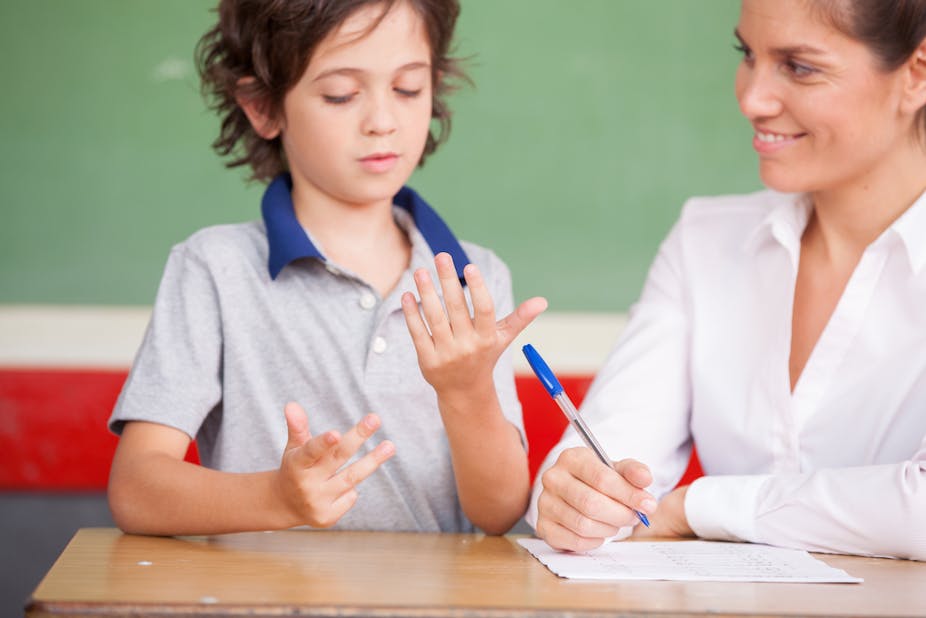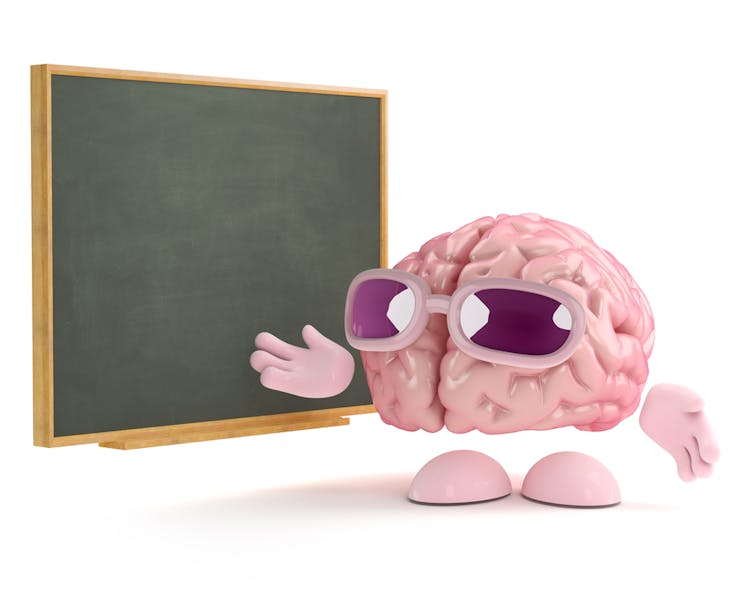What goes on in teachers’ brains as they help students to learn
Humans spend an enormous amount of time and effort thinking about other people. Like primates, birds and even ants, we often learn skills and information from others. In the past, research has extensively focused on how skills are learnt through observation or imitation and what happens in the brain when we do so.
Yet a lot of information is actually learnt from teachers. Now, researchers are beginning to explore the science of what goes on in a teacher’s brain...

Humans spend an enormous amount of time and effort thinking about other people. Like primates, birds and even ants, we often learn skills and information from others. In the past, research has extensively focused on how skills are learnt through observation or imitation and what happens in the brain when we do so.
Yet a lot of information is actually learnt from teachers. Now, researchers are beginning to explore the science of what goes on in a teacher’s brain.
Many of us will remember particular teachers who transformed the way we think, or who gave us life skills that we still use. But the ability to teach is not just a passive process in which the learner absorbs whatever the teacher says. Teachers must monitor the performance of their students and take active steps to give them feedback – a highly effective way of learning if students are receptive to being told when they succeed or fail.
Neuroscientists are beginning to understand how the human brain processes information in learners. Yet very little is known about how the brains works when people are engaged in teaching. Our new research aimed at finding out whether it’s possible to understand the brain processes involved when we monitor how wrong other people are.
Social learning in the brain
In the past, research on “social learning” – or learning while interacting with other people – has focused on the brain of the “student”. Among the brain areas which are involved in learning in students, one particular region known as the anterior cingulate cortex (ACC) seems to be very important for understanding other people.
The ACC is one of the most controversial areas of the brain – with extensive debate among neuroscientists over how it works and what processes it is involved in. Yet it has been shown that the ACC can be divided up into smaller “zones”, each of which is involved in slightly different things.
Recent evidence suggests that a particular zone is active when people are thinking about the decisions other people are making. This led us to hypothesise that this region might also play an important role in someone’s brain when they are monitoring what someone else has done and providing that person with feedback – including when people are acting like teachers.

Tracking what students do
We used a brain scanning method called functional MRI to study changes in brain activity when 15 people stepped into the role of a “teacher” whose task was to give feedback to a “student”.
During scanning, the “teachers” could see on a computer screen what another volunteer was doing in a computer game. This other volunteer (the “student”) was playing a game where they had to learn which responses were correct and which were incorrect. There were ten very simple pictures, and for each picture, there was the option of pressing four buttons. One out of the four buttons was the correct one.
Over the experiment, “students” had to learn the pattern of which was the correct one of the four buttons, by feedback from the “teachers”, who told them if they were correct or incorrect. Inside the scanner the “teacher” had to watch what the other person was doing and tell them whether their response was correct or incorrect.
So – although they were not teachers – they were having to behave just as teachers do. Our “teachers” had to understand what the correct response should be, decide whether the students’ understanding was correct or not, and then give the students feedback about their performance, in the hope that the students would learn how to do the task better.
We used mathematical approaches, which we call computational modelling, to work out how wrong the beliefs of the students were during the game every time they guessed which button they thought was the correct one.
This approach was based around theories of how people learn what actions will lead to good or bad outcomes in the world. But it had never been used before to examine what might happen in the brain of a teacher. We applied this model to our task to make quite specific predictions about how “active” a brain area would be in the brain of the teacher when they watched how a student was playing the game.
When we analysed the brain imaging data from our experiment, we found that activity in the ACC correlated with what we had predicted with the mathematical model. This showed that the ACC in the brain of a teacher seemed to track how wrong the student was every time they made a guess about which button to press.
Understanding teachers’ brains
This work provides some of the first insights into what brain areas become active when someone is teaching and how they might work to help them to understand someone else’s learning. Added to that, by using a mathematical approach, we hope to have provided a framework that future researchers can use to help them to understand the mechanisms that operate in the brains of teachers.
Despite our interesting findings, this is still very early days and much more research is required before we will understand the biology and psychology of the teaching process.
This article was originally published on The Conversation. Click here to read the original.
![]()
Is school | the best place to learn?
Vote now-
Read More
- Is school the best place to learn? University courses to take this further...
- Dig deeper with a student...
- What goes on in teachers’ brains as they help students to learn
- 5 interesting facts about school around the world
- The Pygmalion Effect and the Golem Effect -- how do teachers’ expectations affect their students?
- Is school always fair?
-
Watch More